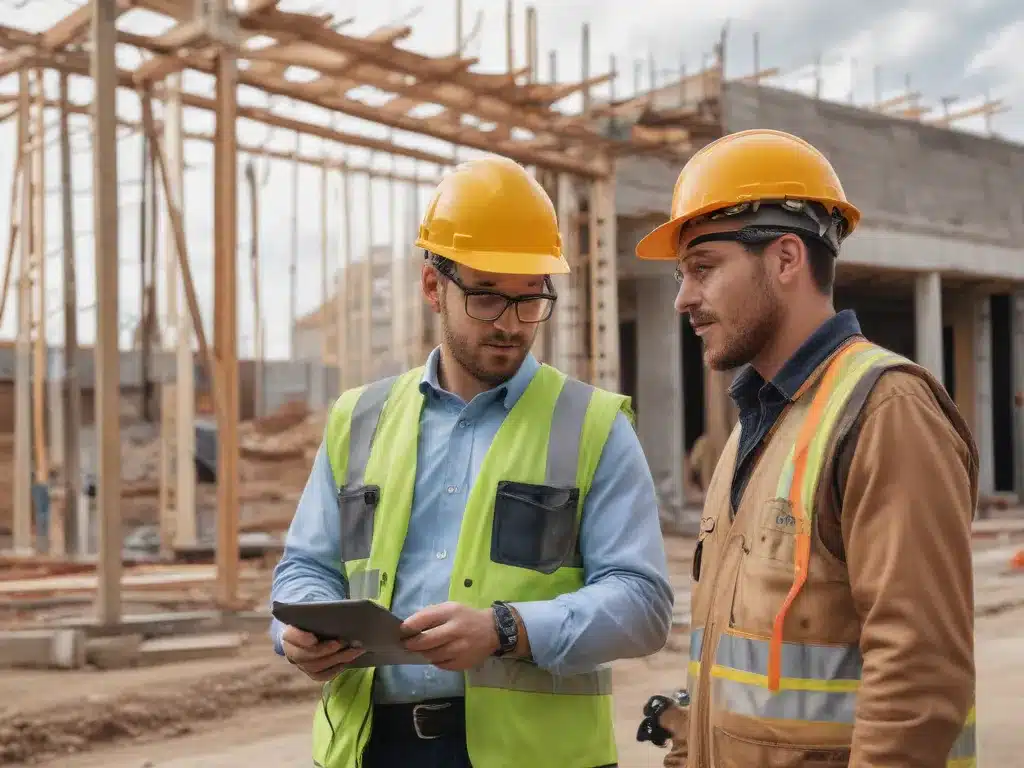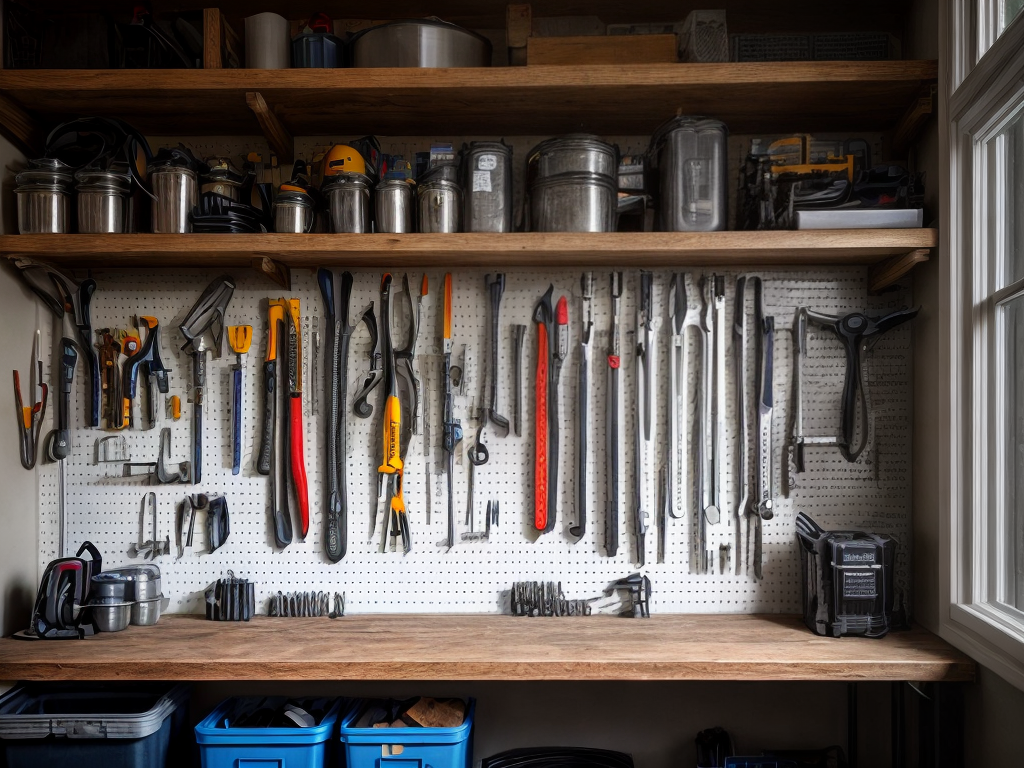
An Innovative Approach to Building the Future
Construction sites have always been a hub of chaos, with materials, equipment, and workers scattered across the site like a Jackson Pollock painting. But what if I told you that there’s a way to bring order to this madness? A way to streamline operations, boost productivity, and ensure everyone’s on the same page – literally and figuratively?
Enter the world of connected construction technology, where job sites become smart, efficient, and downright futuristic. It’s like turning your construction site into the Starship Enterprise, but instead of exploring strange new worlds, you’re building them.
The Internet of Things (IoT) Meets Construction
At the heart of smart job sites lies the Internet of Things (IoT) – a fancy term for devices that can communicate with each other and share data. Imagine your equipment, tools, and even building materials being connected to a central system, constantly feeding information about their location, usage, and status.
It’s like having a personal assistant that keeps track of everything on site, ensuring nothing gets misplaced or underutilized. No more wasting time searching for that elusive jackhammer or wondering if the concrete mixer is still operational.
But IoT tech on job sites goes beyond just tracking assets. It can also monitor environmental conditions like temperature, humidity, and air quality, ensuring a safe and comfortable working environment for your crew. Because let’s face it, no one wants to be pouring concrete in a sauna or breathing in toxic fumes.
Building Information Modeling (BIM): The Blueprint for Success
If IoT is the nervous system of a smart job site, then Building Information Modeling (BIM) is the brain. This powerful software allows you to create a virtual 3D model of your construction project, complete with detailed information on every aspect of the build.
Imagine having a digital twin of your job site that you can manipulate, analyze, and optimize before even breaking ground. It’s like playing Minecraft, but instead of building pixelated castles, you’re designing the next architectural marvel.
With BIM, you can identify potential issues or clashes before they happen, streamline the construction process, and ensure everyone involved is on the same page – literally. No more miscommunications or costly reworks because someone misread the blueprints.
And let’s not forget about the cost savings. By optimizing material usage and minimizing waste, BIM can help you save big bucks on your construction projects. It’s like having a financial advisor whispering in your ear, “Hey, maybe we don’t need that many extra bricks.”
Drones: The Eye in the Sky
Speaking of eyes, have you ever wondered how it would feel to have a bird’s-eye view of your job site? Well, thanks to drones, you can soar above the chaos and get a comprehensive overview of your construction progress.
These flying robots can capture high-resolution images and video footage, allowing you to monitor progress, identify potential issues, and even create stunning marketing materials for Atchison Construction Inc.. Imagine showing off your latest project to potential clients with a cinematic drone flyover that would make Michael Bay jealous.
But drones aren’t just for show; they can also aid in surveying and mapping, providing accurate data on site topography and layout. It’s like having a team of surveyors on call, but instead of lugging around heavy equipment, they’re piloting sleek, high-tech drones.
Augmented Reality (AR): Bringing Blueprints to Life
Remember those old-school blueprints that were about as exciting as reading the phone book? Well, thanks to augmented reality (AR), you can now bring those static plans to life in a mind-blowing, interactive way.
With AR, you can overlay digital information onto the real-world environment, allowing you to visualize your project before it’s even built. It’s like having x-ray vision, but instead of seeing through walls, you’re peering into the future of your construction site.
Imagine walking around your job site with a tablet or smartphone, and as you look through the camera, you can see virtual representations of the buildings, structures, and even equipment that will eventually occupy the space. It’s like stepping into a real-life video game, but instead of shooting zombies, you’re building the next architectural masterpiece.
And let’s not forget about the practical applications of AR. With this technology, you can identify potential clashes or issues before they happen, ensuring a smooth and efficient construction process. It’s like having a crystal ball that can see potential problems before they even occur.
Wearable Technology: The Construction Worker 2.0
Remember when construction workers used to carry around bulky toolbelts and clipboards, struggling to keep track of everything? Well, those days are long gone, my friend. Welcome to the era of wearable technology, where construction workers are essentially cyborgs – but in a cool, futuristic way.
Imagine your crew sporting high-tech smartwatches or augmented reality (AR) headsets that provide real-time data on their tasks, schedules, and even safety protocols. It’s like having a personal assistant whispering in their ear, “Hey, don’t forget to secure that scaffolding!”
But wearable tech isn’t just about staying organized; it can also enhance safety on the job site. With sensors that can detect falls, monitor vital signs, and even track worker fatigue levels, you can ensure your crew stays safe and healthy throughout the construction process.
And let’s not forget about the productivity boost. By reducing the time spent searching for information or tools, wearable tech can help your workers focus on what really matters – building amazing structures that will stand the test of time.
Data Analytics: The Secret Sauce to Optimized Operations
With all this connected technology on your job site, you’re going to be swimming in data – and I mean drowning in it. But fear not, my data-loving friends, because that’s where data analytics comes in to save the day.
By harnessing the power of advanced algorithms and machine learning, you can turn that raw data into actionable insights that can help you optimize every aspect of your construction operations. It’s like having a team of data scientists working around the clock to uncover hidden patterns and opportunities for improvement.
Imagine being able to predict potential delays or bottlenecks before they happen, allowing you to proactively adjust your schedules and resource allocations. Or perhaps you could identify areas where you’re wasting materials or labor, enabling you to streamline your processes and cut costs.
And let’s not forget about the safety implications. With data analytics, you can track and analyze incidents, near-misses, and safety violations, helping you identify potential risks and implement effective preventive measures.
Putting it All Together: The Smart Job Site of the Future
Now, I know what you’re thinking: “That’s a lot of fancy tech to wrap my head around.” But fear not, my construction compadre, because when you combine all these connected technologies, you create a job site that’s smarter, more efficient, and downright futuristic.
Imagine walking onto your construction site, and everything is seamlessly integrated and working in harmony. Your BIM model is displayed on a massive augmented reality screen, allowing you to visualize the project in stunning detail. Drones soar overhead, capturing progress updates and feeding data into your analytics system.
Your workers, equipped with wearable tech, receive real-time instructions and safety alerts, while IoT sensors monitor every aspect of the site, from equipment usage to environmental conditions. It’s like conducting an orchestra of construction magic, where every element plays its part in perfect synchronicity.
And the best part? All of this technology is available right now, waiting to be implemented by forward-thinking construction companies like Atchison Construction Inc.. So why settle for outdated, inefficient methods when you can embrace the future of construction today?
Conclusion: Building a Smarter Tomorrow
Smart job sites aren’t just a passing fad or a fancy gimmick; they’re the future of construction. By embracing connected technologies like IoT, BIM, drones, AR, wearables, and data analytics, you can revolutionize the way you approach construction projects.
From increased productivity and cost savings to enhanced safety and efficient operations, the benefits of smart job sites are undeniable. But perhaps the most significant advantage is the ability to deliver higher-quality projects that meet or exceed your clients’ expectations.
So, whether you’re building towering skyscrapers or residential communities, it’s time to ditch the outdated methods of the past and embrace the future of construction. Because let’s be honest, who doesn’t want to be part of a job site that feels like a scene straight out of a sci-fi movie?
At Atchison Construction Inc., we’re committed to staying ahead of the curve and leveraging the latest connected construction technologies. Because in an industry where innovation is the key to success, we refuse to be left behind.
So, what are you waiting for? Join us on this exciting journey toward smarter job sites and a more connected, efficient, and sustainable future of construction. Trust me, it’s going to be one wild ride – but isn’t that what makes it all worthwhile?





